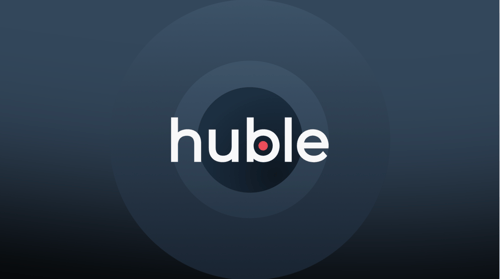Content is a key ingredient in your marketing campaign and helps you to generate leads. However, for content to generate leads, it needs to be of high quality and relevant to your target audience. Find out how to create lead-generating content for your business by reading this blog.
Content is the backbone of any marketing campaign but many businesses still struggle to create lead-generating content.
The problem is that many businesses, having heard of the amazing business benefits of content marketing, dive head-first into content creation, blogging maybe once or twice a month without developing an actual strategy.
Weeks or months later, they come back and look at the blog analytics and are surprised to find that their blogs – despite being well-written and interesting – have not generated any leads for the business.
This problem is prevalent across B2B markets. Fortunately, creating lead-generating B2B website content is actually straightforward, but it requires that businesses actually take the time to cover the basics in detail.
In this blog, I’ll share some best practice advice and top tips on how businesses can create B2B website content that consistently generates leads.
What does your target audience want?
In order to create lead-generating B2B website content, you first need to identify who you are marketing to – and this means creating buyer personas (if you haven’t already).
But what are buyer personas?
Buyer personas are semi-fictional representations of your ideal customers – they are based on market research and real data about your existing customers.
Find out more about buyer personas.
Buyer personas are important because they help you to focus on the specific business challenges your target audience is facing and create tailored B2B website content to address those challenges.
For example, if you know that one of your ideal customers is a finance manager and their main challenge is finding a suitable, cloud-based accounting system and you provide such a solution, you could create a piece of content that reviews the top cloud-based accounting software.
This is just one example but if you know who you are marketing to and want to get on board with your business, it becomes incredibly easy to create website content that appeals to them.
Include calls-to-action within your B2B website content
Even if your content is stellar, thought-provoking and interesting – if it has no calls-to-action (CTAs) to direct readers to landing pages on your website, how will you convert website visitors into leads?
The content you produce should not only educate but include mechanisms (such as CTAs and lead flows) that encourage readers to engage further with your business – perhaps subscribing to your blog, reading another piece of content or downloading an eBook.
With this in mind, ensure your content includes CTAs to other relevant content that will be of interest to the reader. If you have built buyer personas for your business, you will already know what kinds of content your readers will want to see.
Some top tips for CTAs in website content:
-
Make them easy to find and visible
-
Create a sense of urgency
-
Include action words to encourage readers to engage
Use a variety of different content formats
If your blog is already up and running (and generating a lot of organic traffic for your business) don’t be afraid of trying different content formats.
Of course, while blogging is one of the most effective content formats (second only to video) and doesn’t require a significant amount of investment to produce results, having a variety of B2B website content will help you to retain and engage with more website visitors.
Think about it. Some of your website visitors will be time poor but keen to find out more about your business and what it does – so what better way to convey information quickly than with a video? It requires no real mental investment on the part of the website visitor and can easily get across complex topics.
On the other hand, for those website visitors that want in-depth and comprehensive information – a research report or white paper would be more effective.
By using different content formats you can appeal to those who want more detailed information, as well as those with limited (or abundant) time.
Create content for every stage of the flywheel
Rather than thinking of your B2B website content in terms of a funnel – i.e. top, middle and bottom of the funnel content (TOFU, MOFU and BOFU respectively) think about producing valuable content that can help your target audience no matter where they are in the buyer’s journey or if they are an existing customer.
In an ideal world, you should be producing content to attract, content to engage and content to delight your customers. By approaching content creation in such a fashion you will be able to rapidly grow your business.
But you also need to take advantage of the most prominent sources of leads – and in 2018, it’s your customers. Your customers speak louder than any of the content you produce and if they truly love your business, they will talk about it and recommend it to their friends and family.
With this considered, leverage your happy customers to create valuable content for your business – case studies, customer testimonials, video reviews – this kind of content will demonstrate to new website visitors just how great your business is.
The end result is that as you produce website content to attract, engage and delight B2B customers, your business’ lead generation and growth becomes self-sustaining.
Remove the friction from your content creation process. Make it easy for your website visitors to educate themselves.
Understand what works
In addition to creating content to attract, engage and delight customers you have to leverage content/web analytics to understand what website visitors are reading and engaging with.
HubSpot’s content management system (CMS) for example, allows you to track everything at the website level – i.e. page views, clicks and conversions – but also allows you to drill down into that information to see page views by source, clicks by device/platform and just who converted on a specific web page.
Using this information, understanding the path to conversion – i.e. the steps someone takes before reading a piece of content and converting on a landing page – is relatively easy. Once you know the most popular paths to conversion and the content assets contributing to those conversions, you can focus on creating more of that content and distributing it across your site.
Instead of making assumptions about what B2B website content drives lead generation – use the analytics at your disposal to understand how your website and content is being interacted with to then make data-driven decisions on what to produce next.
Lead-generating content starts with your buyer personas. If you know who your target audience is and are able to segment that audience into a few detailed personas, you can start to create high-quality content that answers their questions and helps them to solve their business challenges.
After you create your personas, ensure that you create content for every stage of the flywheel to attract, engage and delight your customers. Once you do, it becomes a self-sustaining, lead-generating process.
If you want to find out more about creating lead-generating B2B website content for your business, check out our free eBook below.
.png?width=80&height=80&name=Huble%20-%20BLOG%20AUTHORS%20FOR%20WEBSITE%20(3).png)








-3.png?width=500&height=320&name=Matt%20-%20imagery%20bank%20(8)-3.png)

